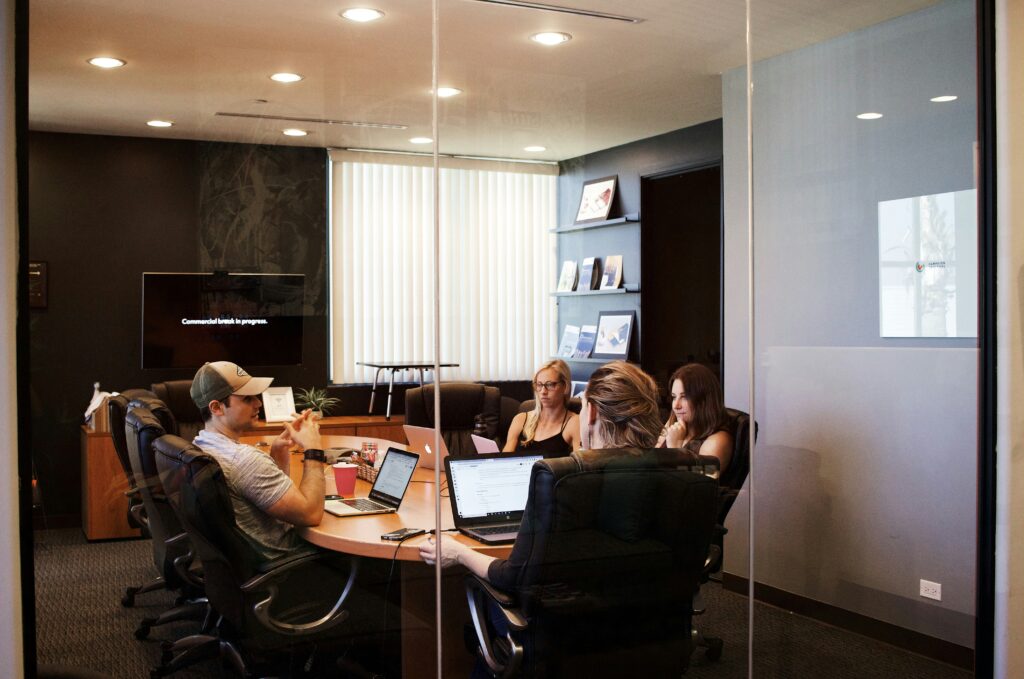Is building back better a remote possibility? With hybrid work placing human resource teams and planners under pressure, rebuilding the workforce is proving a tricky customer.
The tech industry is finding itself in a post-pandemic hangover and, as with most hangovers, this one follows an eventful ride: Pretty much all tech vendors performed well during the pandemic, and started hiring, creating more competition for a specialized workforce and driving up labor costs.
As it turned out – growth didn’t stay in place, but plunged, and a global economic slowdown did not help either. To be fair – it was not only tech vendors: Algorithm-driven Amazon failed at predicting demand in the post-pandemic economy and also needed to adjust its overall workforce accordingly.
Recoiling, many tech vendors then cut their hires along with numerous other slimming down measures to cope with the heat of dropping profits. Still today, the tech-centric workforce has found itself building back from the slump with many new and fundamental workforce changes. But, before we dive in on what the new best practices are for workforces and hires, let’s look at the biggest changes that have occurred.
Talent pools went from local to global
Before the pandemic, it was clear that talent acquisition for most tech jobs would be sourced locally, in a feasible traveling range of the office location where the job opening was. That has changed to talent sourcing being able to go beyond the office location, going first to local then to adjacent time zones – all the way to global. Today the percentage of tech workers being employed permanently on other continents is steadily growing, often reaching double-digit percentages. Adding temporary longer work stints, 20-30 percent of the tech workforce has worked remotely for longer periods over one and under three months. With 93 percent of enterprises looking for remote workers, talent pools remain anything from hyperlocal to global.
Work from home/hybrid is here to stay
On the whole, people are seeming to prefer to work from home, especially when there is no benefit from working in an office. The exception are enterprises that, out of solidarity, want a presence in office for all workers, as a large percentage of non-tech workers still need to show up in person (see Elon Musk’s no remote work directive at Tesla). In the US, the overall percentage of the in-office workforce has dropped to under 60 percent, with no sign of returning up. And with 98 percent of people expressing an interest in working from home at least part time, full-time in-office work, for the most part, appears to be on the shrinking side.
With almost two-thirds of all workers claiming to work remote at least occasionally, the reality for most has become hybrid working, with a work-from-anywhere policy often being the new normal. Leading the trend here is the tech industry – because of the nature of technology work, the intangible nature of the offering (software) lends itself very well to the work setup (much better than any manufacturer can ever do).
The work/life balance equation will be a struggle to revert, as it turns out that people like their flexibility. Even tech giant Apple has failed multiple times to force its workforce back to the office, with key employees and executives even leaving the vendor.
Many tech vendors have ‘egg on their face’ when it comes to workforce planning.
Realizing this sticking point, executives instead work on minor tweaks to turn the wheel back, with currently the after-work social event being one of the key incentives to come back to work… But with the social activities starting earlier and earlier, some executives are starting to investigate the effectiveness of the strategy.
Remote work may be generational – or not
With almost 40 percent of the 24-35-year-olds working full-time remotely, and one in four working remotely part-time, one of the most interesting questions about the future of work is if remote work is a question of age or generation. Whether the current Millennial generation will keep working remotely into their forties is going to be key for office capacity planning.
But, with Generation Z working remotely too, much weight pivots on the fact that the following generation has also entered the workplace preferring remote work. On the whole, the trend points to remote work being a cross-generational preference, with older workers gravitating to more in-office settings.
How to rebuild and grow the workforce
Now that we have looked at the unequivocal trends underlying remote work, let’s unpack the winning strategies to help rebuild the tech workforce successfully:
Plan demand better
Many tech vendors have “egg on their face” when it comes to workforce planning. Too many have been too naïve, thinking that the pandemic-boosted economy would get even stronger post-pandemic. Today we know it is not. Even more stickily, people are the biggest expense for tech companies: Finding them, hiring them, training them, keeping them is not cheap. While cutting workforce planners a little slack – they have never been faced with a pandemic of this size in a modern economy – it remains key that improved planning will consider that capacity planning needs realism.
Planning models need to improve to avoid the over-hiring that has happened in the tech industry. Alternate scenarios need to be considered and a more balanced approach needs to win in planning.
Companies need to avoid competitive hiring frenzies. A large portion of the over-hiring has been caused by tech vendors thinking they needed to have certain skills in a certain capacity – and were jolted into overdrive by the competition hiring. Similar scenarios rarely end well, and they did not end well in this case for the industry.
Now, workforce planners need to account for the remote worker onboarding reality. It turned out to be hard to get remote workers as fast and productive as people working in offices – see Salesforce’s Marc Benioff’s recent views on the topic, as in an employee note that made it to the press, he suggestively questioned why “new employees (hired during the pandemic in 2021 and 2022) are especially facing much lower productivity”. The state of work is now seeing tech vendors needing to account for longer and more challenging onboarding times…
Being opportunistic with hiring is also key moving forward. Non-tech enterprises were strategic here, snapping up the laid-off tech workers, as well as the workers who wanted a change in their work/life balance. Now it is time for the tech industry to get the better people, who look for a faster-paced work culture and for their work to not just affect a single enterprise, but the bigger picture of 100s or 1000s of enterprises.
Managing flexibility moving forward
As we have seen – taking back flexibility does not sit well with today’s workforce, even if the flexibility only came from legal requirements at the time. Executives need to think twice before establishing flexibility on where to work. On the other hand, being one of the first employers to offer flexibility in an area of work will offer advantages to the first movers. So, it is critical to weigh out the pros and cons.
The office is far from dead, but will likely be smaller and different. Smaller because not all people will be at work anymore from nine to five and different because some colleagues will still prefer to be at home, or even at the coffee shop around the corner. So, creating a space that is productive to have (hybrid) meetings and fosters collaboration will be key. Recreating work-from-home spaces will be positive for productivity as people are used to a similar environment. TVs and kitchens are more prominent than in offices of the past for that reason. Plus, the ability to complement the home situation is key – as your workforce may even expect to do activities such as cooking with office kitchen appliances with their colleagues.
Understand the diversity implications
Diversity cannot go amiss either. For instance, we know surveys suggest that more male workers work remotely than female workers, but we also know that female workers rank flexible work hours and location higher than their male colleagues, and that’s just one example. Executives need to keep this and much more in mind to understand what their remote work strategy and office work environment direction will do for diversity and inclusion.
Beware ageism and the hiring “runway” – instead leverage experience. Experience earns more in the tech industry than in most others. In downturns, executives can be tempted to let go of their experienced workers and replace them with younger in-house workers for pure cost-saving motives.
Offering alternate and more flexible forms of employment, including remote work, can extend work life, enrich the workforce and ultimately help an enterprise.
Equally, the drive to reshape the personnel cost curve by moving offshore is always an option in the technology industry, but it is often driven by talent availability, not cost. Executives need to balance value vs cost one employee at the time, with the recent decisions on having a “runway” of people a dangerous and slippery construct. In the end, the potential of an employee should be measured by their innate talents, motivation and training options provided by their employers. With the first being a given, the two latter drivers are highly dependent on the employing enterprise. What’s clear though, is that by offering alternate and more flexible forms of employment, including remote work, it can extend work life, enrich the workforce and ultimately help an enterprise.
Training and upskilling are crucial
The old best practice of growing internal talent before hiring is still valid. Especially with technology work becoming more complex by the day, onboarding and education costs are only growing. The strategy of re-skilling existing employees to be faster and more efficient remains a good option for employers. What has changed is the way people learn and acquire new skills. Being at the front of learning innovation is key for tech companies and the quality and availability of learning is in the top retention drivers of their workforce.
Foster the new enterprise culture
Enterprise has an organizational DNA and culture. Both need to live in harmony, and executives need to understand what the drivers and promoters for their enterprise’s culture are to establish, propagate and strengthen culture, especially given this will have all changed in the new remote/hybrid working setup.
It is the serendipitous moment at the proverbial water cooler and other random encounters that are desirable. But is it necessary for people to come to an office for that?
For instance, a strong argument for returning to the office is the benefit of people seeing each other and communicating and collaborating better. It is the serendipitous moment at the proverbial water cooler, and other random encounters, that are desirable. But is it necessary for people to come to an office for that?
Luckily, we have seen a lot of progress in AI and ML in recent quarters, and the hope is that there will be more help to find these key coincidental encounters wherever workforces are based, that can change work outcomes and accelerate enterprises. Whether these moments are remote, at a local coffee shop or even bar, the key is to figure out how to create these interactions and moments repetitively and at scale.
The best practices for how to manage people have also changed fundamentally post-pandemic. Executives need to keep an open mind towards how this will continue to evolve in the 2020s. Experimentation between offices, divisions and countries is a welcome setup, as it will show what works and what does not. Importantly though, working with any new best practices needs to be propagated and successfully implemented to enable an enterprise to succeed consistently. Finding the right balance is going to be the art.
At the end of the day, the success of a technology enterprise relies on the quality of its people, particularly its leader. People keep jobs with good leaders and quit jobs with bad ones. Demonstrating leadership is even more important in remote and hybrid workplaces than in traditional office setups. Executives not only have to walk the walk and talk the talk, but also foster and train new leadership principles and practices in middle and junior management.
With the tech industry having over-hired, and in some cases then over-fired, its current period of adjustment to align both talent and spend to the reality of its business can only be a welcome path ahead. In this post-pandemic hangover, the sooner executives understand that their workforces want remote and hybrid work to stay, and the sooner they embrace it, the more successful their enterprise will be.






